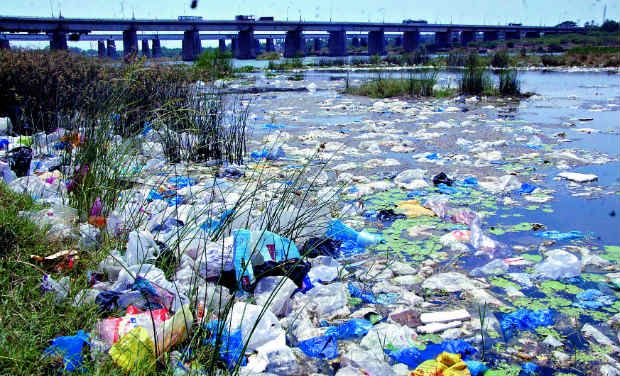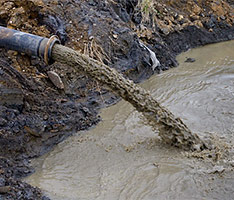Stormwater Management
What is an MS4?
An MS4 is a designation that stands for the entity that oversees the “municipal separate storm sewer system”. It is the drainage system owned by the Town intended to carry only surface runoff (rainwater) to a receiving stream. In Munster’s case, the ultimate receiving stream is Little CalumetRiver. Munster is mandated, along with other local and regional municipalities, to put together an MS4 program that administers the requirements that IDEM sets forth. IDEM, the Indiana Department of Environmental Management, is directed in Indiana by the EPA to oversee the MS4 program.
What is a Watershed and do I live in one?
First off, everyone lives in a watershed. A watershed is not a wetland, nor is it floodplain. Simply put, a watershed is the area of land that catches rain and snow and then drains or seeps it into a marsh, stream, river, lake or groundwater. There are millions of watersheds, as each section of rivers and streams have different geographic areas draining to them. The Town of Munster is in two watersheds, Plum-Creek-Little Calumet River Watershed and the Thorn Creek Watershed, both of which are part of the Upper Illinois-Chicago Basin which drain into the Mississippi River.

Source: U.S. Department of Agriculture (USDA), Natural Resources Conservation Service (NRCS), U.S. Geological Survey (USGS)
Why does the Town charge a Stormwater (MS4) fee?
Due to the unfunded mandate for the Town to oversee the MS4, the Town must determine how to pay the service that is required. The stormwater (MS4) fee that is assessed to every lot of record in the Town of Munster goes to the Stormwater Fund to manage the MS4 permit requirements and the Town's Stormwater infrastructure, as well as projects that can help with the improve stormwater drainage of the Town. The fees are assessed on your monthly Utility Billl. Every lot and parcel, developed or underdeveloped is to be charged the fee as established by Ordinance 1250.
Pollution Control Efforts
The responsibility for cleaning and maintaining the storm drain system throughout Indiana is shared by government and every citizen living within their respective jurisdictions. The Town of Munster has implemented plans and budgets to maintain the system. Any site disturbance of one acre or more, or if included as part of a larger development that has an MS4 permit must pick up a permit application at the Munster Town Hall.
What is Storm Water Pollution?
Our rainwater travels through gutters, storm drains, channels, ditches and eventually into Mississippi River. The largest source of storm water pollution in Indiana results from everyday activities. The most common pollutants are:
- Trash and rubbish (fast food wrappers, plastic grocery bags, plastic beverage bottles, cigarette butts, Styrofoam cups, grass clippings, dirt, sand, rock, etc.)
- Toxins (used motor oil, antifreeze, fertilizer, pesticides, sewage overflow, pet droppings, etc.)
These pollutants are picked up by water (from rain, hoses, sprinklers, etc.), drains from streets, parking lots, lawns, etc, and enters the many catch basins throughout the Town of Munster. From there, the untreated water flows through an extensive system of pipes, ditches and rivers and eventually to the Mississippi River. Basically, anything dumped or dropped on the ground or in the gutter contributes to storm water pollution.

Is Storm Water Treated Before Entering Mississippi River?
No. During a storm event, water runoff is carried by the storm sewers directly into the Little Calumet River. Contaminated storm water received no treatment because of sheer volume of runoff from the area encompassing the Town of Munster. The cost of treating this storm water would be so high that it would exceed available resources.
Is There a Difference Between a Storm Sewer and a Sanitary Sewer?
Yes. The sanitary sewer and the storm sewer are two completely separate drainage systems. The sanitary system takes all household wastewater (also known as gray water) from toilets, showers and sinks, and routes it through your plumbing system into the wastewater collection system where it is transported to the Hammond Sanitary District’s waste water treatment facility. Once there, it is treated before being discharged into Lake Michigan. The storm water system, on the other hand, was intended to route rainwater quickly off the streets during a heavy storm, but unfortunately takes all urban runoff along with it. Chemicals, trash and debris from lawns, parking lots and streets, either intentionally or accidentally spilled, goes straight into the rivers.
The Problem: Illegal Dumping
Illegal dumping in the streets and in the storm drain system is one of the largest contributors to water pollution in the country. The exposed open flood control channels are often easy targets for illegal dumping and convenient trash disposal.
Soiled diapers, shopping carts, yard waste, antifreeze, cleaning solvents, soapy water, and used oil containers are just some of the many items tossed into open channels. When it rains, water runoff will carry these items through the storm system and eventually make its way into the Lake.

Health
Storm Water pollution can pose a serious health risk to people due to pesticides, bacteria and chemicals that are washed from our streets and into the storm water.

Environmental Effects
Countless marine plants and animals living in our rivers and lake may become sick or die from contact with storm water pollution.
Neighborhood Effects
Clogged catch basins significantly decrease the quality of life in many neighborhoods throughout the Town of Munster. These “nests” of trash and debris can attract rats and cockroaches, create foul odors, and clog the storm drain system affecting neighborhood aesthetics and property values, and may cause local flooding.
What can I do?
Quite a bit. Most residents are unaware that they can have an effect on water quality. This is probably due to the lack of understanding on how the storm water system functions. Typical residents can have a large effect on water quality. Fertilizer, dog waste, and illegal dumping of any waste material has a direct effect on water quality. Dumping waste oil down any sewer, storm or sanitary will immediately pollute the area it flows to. Nothing should be put down the drain except clean water. These pipes lead to our streams, the storm sewer water is NOT treated. This runoff will go straight to the rivers and streams. The industries along are overseen by IDEM and they have strict regulations to what they are allowed to put in the water. Residents are overseen by the MS4 and we have to watch what is put into the waters.
What you do matters!
The water that you either pump from the ground from a well, or pay the water company comes from this runoff. It is absorbed by the ground for your consumption or into Lake Michigan and is consumed. Next time the beaches are closed down, ask yourself, what could I have done to help?
Important Links
NIRPC, Northwest Indiana Regional Planning Commission, has a great website to show more of what you can do and what they are doing. Check out their website at: http://nirpc.org/environment/water.htm
IDEM’s website contains additional information and the following link shows the States information for residents: http://www.in.gov/idem/nps/
- Useful Links
- More Info




 Copyright © 2025
Copyright © 2025